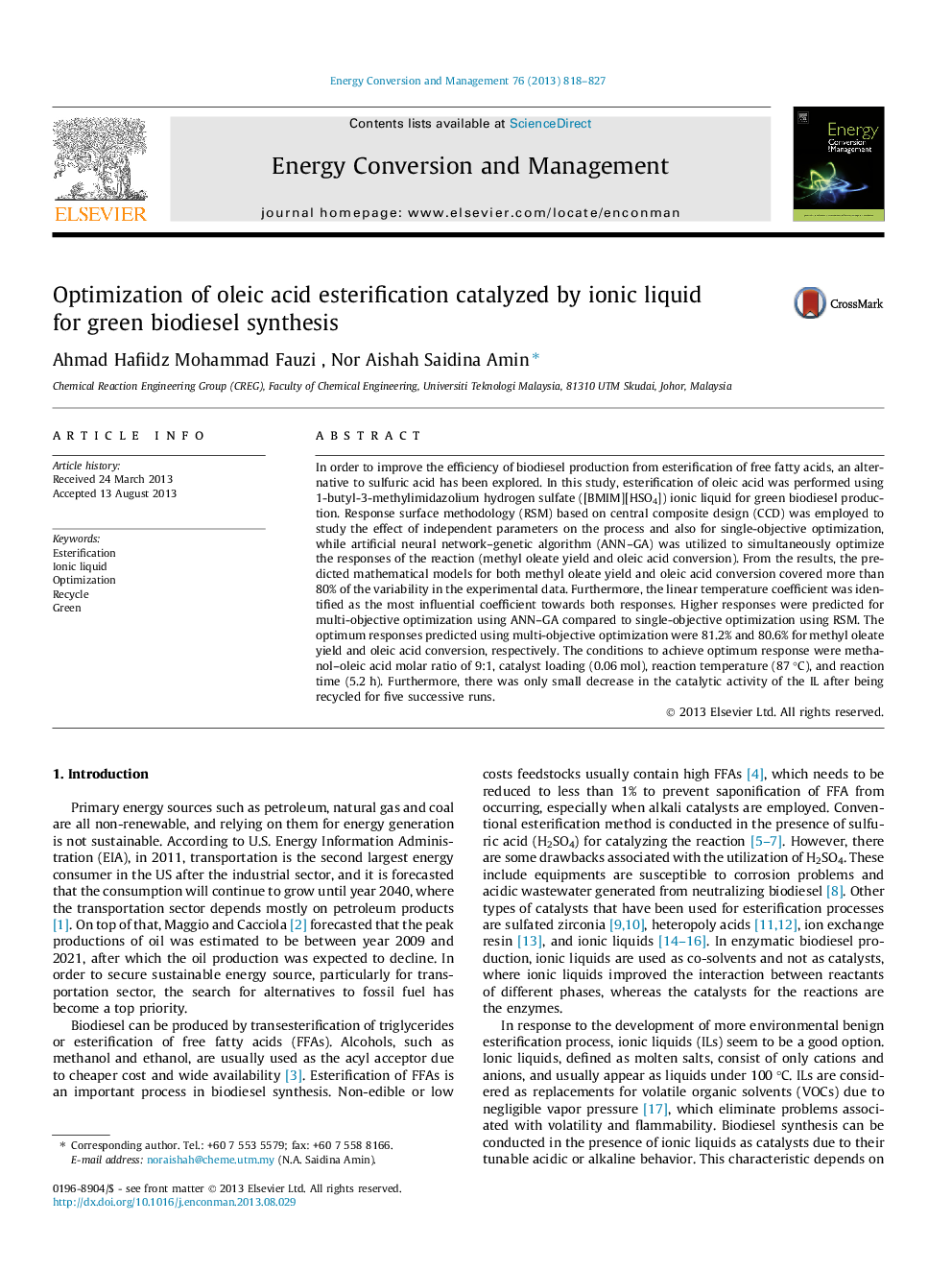| کد مقاله | کد نشریه | سال انتشار | مقاله انگلیسی | نسخه تمام متن |
|---|---|---|---|---|
| 760840 | 1462886 | 2013 | 10 صفحه PDF | دانلود رایگان |

• Methyl oleate was produced from esterification of oleic acid using [BMIM][HSO4] IL.
• RSM and ANN–GA were used for optimization of esterification reaction.
• Linear term for temperature was the most significant parameter for both responses.
• Optimum responses in 5.2 h, 0.06 mol IL catalyst, 9:1 methanol:oleic acid and 87 °C.
• Recycled ionic liquid can be used repeatedly without significant loss of activity.
In order to improve the efficiency of biodiesel production from esterification of free fatty acids, an alternative to sulfuric acid has been explored. In this study, esterification of oleic acid was performed using 1-butyl-3-methylimidazolium hydrogen sulfate ([BMIM][HSO4]) ionic liquid for green biodiesel production. Response surface methodology (RSM) based on central composite design (CCD) was employed to study the effect of independent parameters on the process and also for single-objective optimization, while artificial neural network–genetic algorithm (ANN–GA) was utilized to simultaneously optimize the responses of the reaction (methyl oleate yield and oleic acid conversion). From the results, the predicted mathematical models for both methyl oleate yield and oleic acid conversion covered more than 80% of the variability in the experimental data. Furthermore, the linear temperature coefficient was identified as the most influential coefficient towards both responses. Higher responses were predicted for multi-objective optimization using ANN–GA compared to single-objective optimization using RSM. The optimum responses predicted using multi-objective optimization were 81.2% and 80.6% for methyl oleate yield and oleic acid conversion, respectively. The conditions to achieve optimum response were methanol–oleic acid molar ratio of 9:1, catalyst loading (0.06 mol), reaction temperature (87 °C), and reaction time (5.2 h). Furthermore, there was only small decrease in the catalytic activity of the IL after being recycled for five successive runs.
Journal: Energy Conversion and Management - Volume 76, December 2013, Pages 818–827